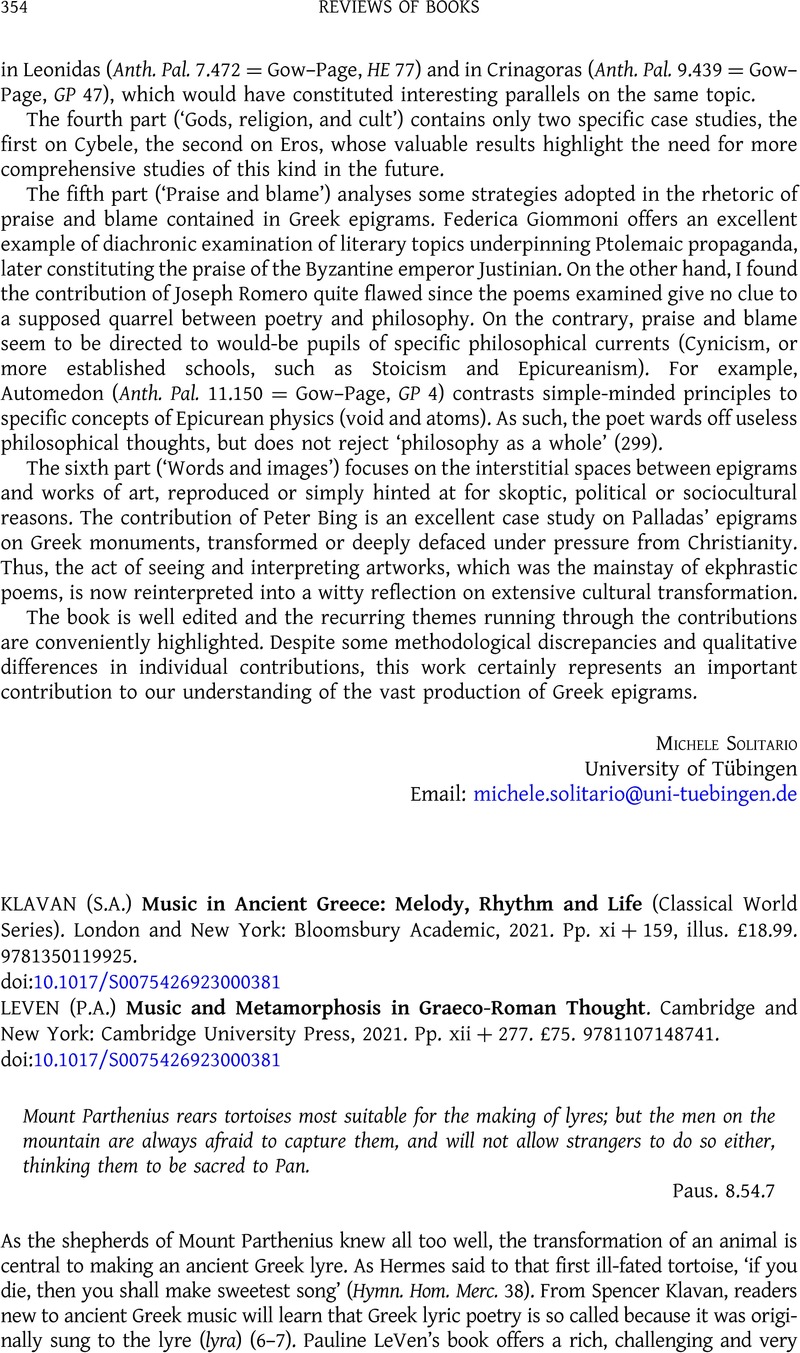No CrossRef data available.
Article contents
(S.A.) KLAVAN Music in Ancient Greece: Melody, Rhythm and Life (Classical World Series). London and New York: Bloomsbury Academic, 2021. Pp. xi + 159, illus. £18.99. 9781350119925. - (P.A.) LEVEN Music and Metamorphosis in Graeco-Roman Thought. Cambridge and New York: Cambridge University Press, 2021. Pp. xii + 277. £75. 9781107148741.
Review products
(S.A.) KLAVAN Music in Ancient Greece: Melody, Rhythm and Life (Classical World Series). London and New York: Bloomsbury Academic, 2021. Pp. xi + 159, illus. £18.99. 9781350119925.
(P.A.) LEVEN Music and Metamorphosis in Graeco-Roman Thought. Cambridge and New York: Cambridge University Press, 2021. Pp. xii + 277. £75. 9781107148741.
Part of:
History
Published online by Cambridge University Press: 09 May 2023
Abstract
An abstract is not available for this content so a preview has been provided. Please use the Get access link above for information on how to access this content.

- Type
- Reviews of Books
- Information
- Copyright
- © The Author(s), 2023. Published by Cambridge University Press on behalf of the Society for the Promotion of Hellenic Studies


